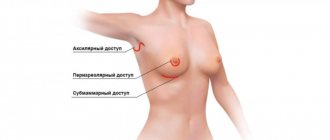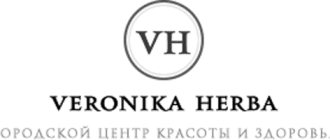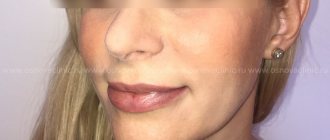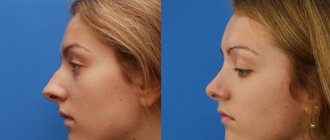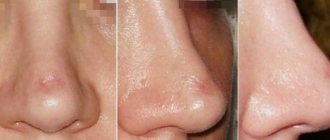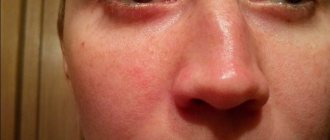Rhinoplasty is an operation to change the shape of the nose and its size. It is considered one of the most difficult in plastic surgery. It requires experience and compliance with many nuances from the doctor performing the intervention in order to obtain the expected result. Even after a successful operation, the patient may experience quite a lot of problems during the rehabilitation period, especially if certain rules and restrictions are not followed. Therefore, it is important to strictly follow your surgeon's recommendations for managing swelling and bruising after rhinoplasty.
Causes and areas of formation of nasal swelling after rhinoplasty
One of the expected side effects that is unpleasant for the patient is swelling and bruising after rhinoplasty. This is due to the fact that the skin and underlying tissues in the area of the nose and adjacent tissues are densely intertwined with a network of blood vessels, so during surgery they are injured, the tissues of the nose are damaged, which causes a natural inflammatory reaction and minor bleeding. This leads to bruising (tissues become saturated with blood flowing from damaged vessels) and swelling (intercellular fluid accumulates in the area of damaged tissues).
The most commonly affected tissues and vessels are in the area of the back and wings of the nose, as well as around it and the tissue under the eyes (they are connected by a common blood network). Therefore, it is in these areas that swelling and bruising occur. Although such effects are expected and predictable, patients still have questions about when the swelling will go away after rhinoplasty, whether it is necessary to take any medications or perform various manipulations.
Types of facelift
In modern plastic surgery, several basic techniques for performing facelift are used:
- Circular facelift, or rhytidectomy. Plastic surgery is performed exclusively under general anesthesia - during surgical correction, the surgeon eliminates deep wrinkles on the face and neck, and also redistributes tissue in these areas, removes nasolabial folds and excess fat deposits, including the double chin. Thanks to circular tightening, it is possible to eliminate the signs of skin aging and achieve an excellent rejuvenation effect.
There are 3 main types of circular face lift:
- Superficial correction. During plastic surgery, the surgeon makes an incision in the temple area, moving from the borders of the hair to the anterior border of the auricle. The transition passes under the lobe and leads to the scalp in the area behind the ear. If the patient has a double chin, then during the surgical facelift a second incision is made in the chin area, affecting the inner edge of the lower jaw. Thanks to a circular facelift after surgery, an excellent rejuvenation effect is achieved, and the stitches remain almost invisible.
- SMAS lifting. Deep SMAS facelift is an effective technique for correcting age-related changes. During the procedure, the surgeon not only performs superficial skin tightening, but also moves the facial muscles. Surgical correction allows you to eliminate deep wrinkles and change the shape of your face. The results of SMAS facelift last longer than with superficial lifting, but the risks of complications after plastic surgery increase. The rehabilitation period after a facelift also increases. The cost of plastic surgery is increasing.
- Combined correction technique. When using this technique, the plastic surgeon additionally excises superficial tissues that are localized in the area of the outer edge of the masticatory muscle.
The duration of a circular facelift at the Maxim Osin Plastic Surgery Clinic depends on the technique of surgical facial rejuvenation. The procedure can last from 2 to 6 hours. The effect of plastic surgery lasts up to 10 years.
- Front lifting. Plastic surgery involves lifting the upper part of the face, which includes the eyebrows and forehead. The main indications for a surgical facelift are: deep eyebrow wrinkles, ptosis of the eyebrows and eyelids, transverse folds on the forehead, and a tired appearance of the patient’s face. Plastic surgeons perform upper face lifts using 2 techniques: open and endoscopic. Rehabilitation after an open facelift lasts at least 2 weeks. This technique is recommended for patients over 50 years of age. Endoscopic facelift of the upper third of the face reduces the rehabilitation period to 7 days, since the surgeon does not excise the skin during plastic rejuvenation, but effectively redistributes it.
- S-lifting. This aesthetic operation is also referred to as a short-scar or short-flap technique for lifting the oval face. This method of facelift is suitable for young patients or those who have decided to undergo a facelift again. During the S-lift, a plastic surgeon can lift the lower third of the face, due to which jowls disappear and an even contour of the lower jaw is formed. The cervical-chin area, buccal area and nasolabial triangle are also subject to correction.
- Check-lifting. This method of lifting the midface area is indicated in cases where the patient has obvious signs of skin aging - bags under the eyes, ptosis of the cheeks, jowls, deep nasolabial folds. Plastic surgeons perform check-lifting in combination with blepharoplasty, which allows achieving the best results in surgical correction of age-related changes in the face.
- Endoscopic facelift. The operation is performed using modern endoscopic equipment, which reduces the risks of complications after surgery and the invasiveness of the procedure.
- Spatial facelift. This facelift technique is a modern, low-traumatic method of lifting tissue in the middle and lower part of the face. Tissues are moved by the surgeon exclusively through physiological spaces using an endoscope, which makes it possible to reduce trauma and unwanted effects after surgery to a minimum. Space lifting is often performed simultaneously with blepharoplasty and surgery aimed at tightening the forehead tissue.
- Max lifting. This operation is a type of s-lifting, but is characterized by shorter incisions on the skin and a shorter recovery period after surgery.
The price of a face lift will primarily depend on the technique used during the operation. The videos presented on the website will allow you to learn more about various facelift techniques. Also, you can always evaluate the visual results of the operations I performed, thanks to real photos of patients. The final cost of the operation is calculated based on the results of the preliminary consultation.
How long do bruises and swelling last after rhinoplasty?
The reactions of each organism vary greatly, so it is impossible to answer how long bruises and swelling of tissues last after rhinoplasty with an accuracy of up to a day. In most patients, they go away on their own as the tissue recovers. However, minor swelling and hardening of small areas of the nose can persist throughout the year, especially if an osteotomy was performed - removal of part of the bone skeleton with injury to the periosteum and cartilaginous part of the nose. Even if the procedure is carried out using the most modern methods using the latest equipment, when the size or shape of an organ changes, or the cartilage or bone structures are corrected, the tissue is damaged and swells during the operation.
There is a certain dynamics of the development and disappearance of edema after rhinoplasty by month.
Maximum swelling during nasal rhinoplasty usually lasts up to 2-3 weeks. They appear even during surgery due to mechanical trauma and the release of fluid from cells and vessels, and intensify during the first days. Changes in bruised tissue and severe swelling reach their peak by the end of the first week. Then they will gradually go away. Simultaneously with the swelling, bruises gradually disappear; they are most pronounced by 4-5 days, then slowly go away.
By 2-3 weeks, swelling subsides so much that a person can go to work and return to normal life, although tissue swelling may persist, especially inside the nasal turbinates. By this same period, bruises and hematomas completely disappear. It takes the longest for swelling of the periosteum to go away after rhinoplasty: by the end of 2-3 months, swelling remains in the area of the back of the nose and its tip.
From the 4th month until the end of the first year, the swelling becomes invisible to others, it can only be felt by the patient himself and is detected by the doctor during examination. Tissue swelling gradually disappears completely. If the swelling does not disappear within this period or increases, the tissues acquire an unnatural density or softness, you should immediately consult the doctor who performed the rhinoplasty and determine how and how to remove the swelling after rhinoplasty. Your doctor may recommend a course of physical therapy or medication.
Progress of a circular facelift
An effective facelift is achieved through the use of a circular lifting technique by a plastic surgeon. Plastic surgery is performed only in aesthetic surgery clinics, as the patient requires anesthesia.
- During surgery, the doctor makes an incision in the skin behind the ears, in front of the ears, and along the hairline.
- Next, in the process of a circular facelift, the surgeon tightens the tissue in the desired direction, after which the excess skin is excised with a scalpel. The edges of the wound are sutured with non-absorbable sutures, which will be removed within 14 days after the facelift. The timing of suture removal depends on the patient’s condition and the tissue healing process.
- After 21 days after surgery, the stitches become barely noticeable, and after 6 months they become completely invisible.
How to reduce swelling and bruising
At first, when the swelling is most pronounced, you just need to be patient. The doctor will recommend medications and additional procedures that help reduce swelling for a few hours. But while the tissues are healing, they will not go away completely.
To relieve swelling after rhinoplasty, there are a number of recommendations that should be followed from the first days and at each stage.
Key recommendations in the first week of rehabilitation:
- swelling goes away faster with rest and sleep in a semi-sitting position;
- in the first week you should not massage or put pressure on your face or use cosmetics;
- it is important to exclude elevated temperatures (beach, saunas, hot baths);
- sharply limit any physical activity, especially with sharp tilts of the head or body forward and down.
In the second or third week of recovery, it is important to:
- Avoid sleeping on your side or stomach, especially with your face in the pillow;
- avoid sudden displacement of the skin and underlying tissues on the face (massage, overload);
- avoid exposing swollen areas to heat;
- limit physical activity to household chores only.
The doctor may recommend ointments, gels with decongestant, anti-inflammatory components.
During the second or third month after surgery, swelling remains in the area of the back or tip; for a speedy recovery, doctors recommend giving up smoking and drinking alcohol, and putting pressure on the damaged tissue with glasses, fingers, and various objects. You should also avoid prolonged tilting of your head forward and down.
If by the 4th month the tissues are still swollen, a course of physiotherapy prescribed by your doctor will help relieve nasal swelling after rhinoplasty.
Indications for the removal of scars on the face
Most often, the removal of facial scars is carried out for aesthetic purposes. Such defects form a number of complexes that have a detrimental effect on personal life and work. In addition, there are scar formations, the excision of which is required for medical reasons. For example, they lead to tissue deformation or prevent normal joint flexion. In such situations, it is recommended to make correction no later than 30 days after the injury or surgery performed.
Aesthetic plastic surgery of facial scars is carried out 1-2 years after the scar is completely formed. Only then can the result be predicted and the best excision method selected. Of course, surgery will not make the scar disappear, but you can change its appearance and reduce its size, making it less noticeable.
If swelling does not go away for a long time
Sometimes there are situations when changes in tissues remain longer than usual or increase. In these cases, you need to consult a doctor. The time it takes for swelling to subside after rhinoplasty depends on age, tissue characteristics and additional factors that need to be taken into account. During the examination, the doctor will make sure that there are no complications, and swelling and bruising are consequences of the operation, and not additional problems after it. To speed up the healing process, the doctor may recommend local medications (gels, creams) or a course of procedures that improve fluid outflow and microcirculation.
Recommendations on the eve of a facelift
Before plastic surgery to lift the upper, middle or lower part of the face, the patient undergoes a comprehensive examination and passes the necessary tests:
- General blood analysis.
- Analysis of urine.
- Blood chemistry.
- Coagulogram (study of the blood coagulation system).
- Blood tests for hepatitis, HIV and RW.
- Electrocardiogram and interpretation.
- Blood group/Rh factor test.
The plastic surgeon will take photos of the face before surgery during a personal consultation, and will also take photos immediately after the facelift. This will allow the patient to see the result of the facelift.
2 weeks before the planned operation, the surgeon recommends that the patient refuse:
- taking blood thinners (for example, aspirin);
- use of non-steroidal anti-inflammatory drugs;
- smoking and drinking alcoholic beverages.
It is also necessary to adhere to a diet - food should be rich in vitamins and minerals.
Facelift results
Plastic surgery aimed at a facelift allows the patient to look at least 5 years younger. It will not be possible to evaluate the result immediately after surgery, since there will be severe swelling on the face. The face takes on its final appearance only after the rehabilitation period, which in most cases lasts from 5 to 6 months.
The facial rejuvenation effect lasts for 7-8 years. If the patient takes care of the skin of the face and neck, eats right, and visits a cosmetologist’s office, then the result of the facelift can be prolonged for another 2-3 years.
Facelift is an operation that is indicated for patients after the first signs of aging appear on the skin. Therefore, a facelift is possible after 40, 45, 50 years. The maximum limit that surgeons set for performing plastic surgery is 65 years. This is due to possible postoperative risks to the patient's health.
Still have questions about how facelift plastic surgery is performed? Would you like to know how much a circumferential lift costs at our plastic surgery clinic? Call us for detailed advice. Real patient reviews and photos before and after facelift will allow you to evaluate the result of plastic surgery and learn the nuances of endoscopic facelift.

